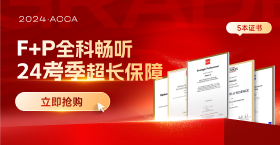重估價資產(chǎn)處置,RS不轉留存收益
重估價資產(chǎn)處置,,RS不轉留存收益,就一直這樣放在報表的所有者權益下面嗎?以后怎么處理呢?該資產(chǎn)已經(jīng)處置了,,按常理與之相關的變動都應轉入留存收益,為什么準則把它作為一個選擇性的規(guī)定。
問題來源:
1.6 Retirements and disposal
Gains or losses are calculated by comparing net proceeds with the carrying amount of the asset and are recognised as income/expense in profit or loss (IAS 16: para. 67).
When a revalued asset is disposed of, any revaluation surplus may be transferred directly to retained earnings. Alternatively, it may be left in equity under the heading revaluation surplus.
1.7 Exchange of assets
Exchanges of items of property, plant and equipment, regardless of whether the assets are similar, are measured at fair value (IAS 16: para. 24)
1.8 IAS23 Borrowing cost
Borrowing costs directly attributable to the acquisition, construction or production of a qualifying asset are capitalised as part of the cost of that asset. (IAS 23: para. 26)
A qualifying asset is one that necessarily takes a substantial period of time to get ready for its intended use or sale. (符合資本化條件的資產(chǎn),,是指需要經(jīng)過相當長時間(一年或一年以上)的購建或者生產(chǎn)活動才能達到預定可使用或者可銷售狀態(tài)的固定資產(chǎn))
Funds borrowed specifically for a qualifying asset (專門借款)-capitalise actual borrowing costs incurred less investment income on temporary investment of the funds (IAS 23: para. 12)
Funds borrowed generally (一般借款) - entity shall determine the amount of borrowing costs eligible for capitalisation by applying a capitalisation rate to the expenditures on that asset. The capitalisation rate shall be the weighted average of the borrowing costs.

王老師
2021-05-10 11:32:05 1747人瀏覽
1.RS 是權益科目,,主要記錄資本增值部分,,目前對于該部份已經(jīng)使用OCE科目記錄,在所有者權益中,。
2.對于重估資產(chǎn)處置RS 的處理就是可以一次性轉RE或者留在RS.
3.在這個準則中ppe處置后已經(jīng)再無相關經(jīng)濟業(yè)務了,,如果在其他準則中遇到相關的RS后續(xù)處理,同學可以繼續(xù)學習RS的處理.
4.可以參考在折舊時RS 的處理:在權益類科目中RE科目是主要給股東分配股利的科目,,RS是記錄資本增值科目不能給股東分配股利,,如果金額大對股東分配股利有影響,對股東影響大,,股東有意愿希望分配,。準則就規(guī)定可以轉入RE。金額小也可以不轉入RE科目,,準則也是允許的。
相關答疑
-
2025-06-26
-
2022-08-30
-
2022-07-10
-
2022-07-05
-
2021-08-15







 津公網(wǎng)安備12010202000755號
津公網(wǎng)安備12010202000755號